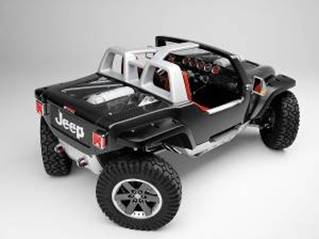





Published on Nov 30, 2023
With advances in technology, modern four wheel steering systems boast of fully electronic steer-by-wire systems, equal steer angles for front and rear wheels, and sensors to monitor the vehicle dynamics and adjust the steer angles in real time. Although such a complex 4WS model has not been created for production purposes, a number of experimental concepts with some of these technologies have been built and tested successfully.
Compared with a conventional two wheel steering system, the advantages offered by a 4WS system include:
• Superior cornering stability.
• Improved steering responsiveness and precision. High speed straight line stability.
• Notable improvement in rapid lane-changing maneuvers.
• Smaller turning radius and tight-space maneuverability at low speed.
• Relative Wheel Angles and their Control.
The direction of steering the rear wheels relative to the front wheels depends on the operating conditions. At low-speed wheel movement is pronounced, so that rear wheels are steered in the opposite direction to that of front wheels. This also simplifies the positioning of the car in situations such as parking in a confined space. Since the rear wheels are made to follow the path on the road taken by the front wheels, the rear of a 4WS car does not turn in the normal way. Therefore the risk of hitting an obstacle is greatly reduced.
At high speed, when steering adjustments are subtle, the front wheels and rear wheels turn in the same direction. As a result, the car moves in a crab-like manner rather than in a curved path. This action is advantageous to the car while changing lanes on a high-speed road. The elimination of the centrifugal effect and, in consequence the reduction of body roll and cornering force on the tyre, improves the stability of the car so that control becomes easier and safer. In a 4WS system, the control of drive angle at front and rear wheels is most essential.

The four wheels have fully independent steering and need to turn in an unconventional direction to ensure that the vehicle turns around on its own axis. Such a system requires precise calculation from a servo motor with real-time feedback to make certain that all three steering modes function perfectly. The only major problem posed by this layout is that a conventional rack-and-pinion steering with pitman arms would not be suitable for this mode, since the two front wheels are steered in opposite directions. Steer-by-wire systems would work fine, however, since independent control can be achieved.